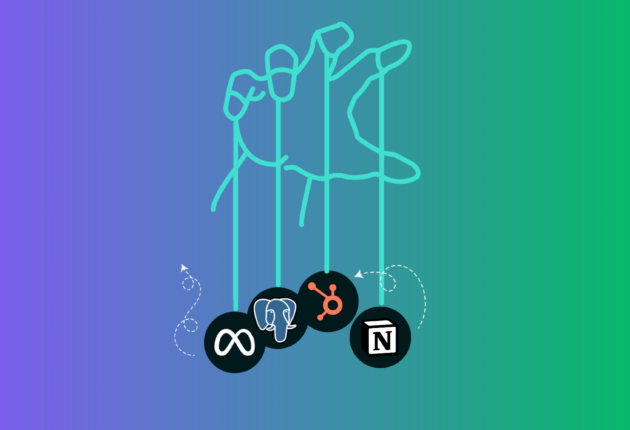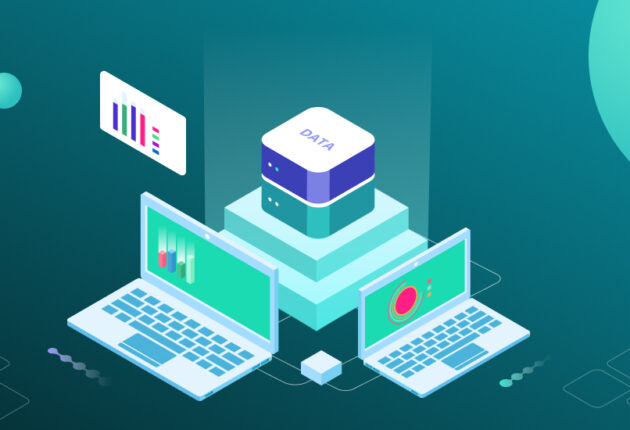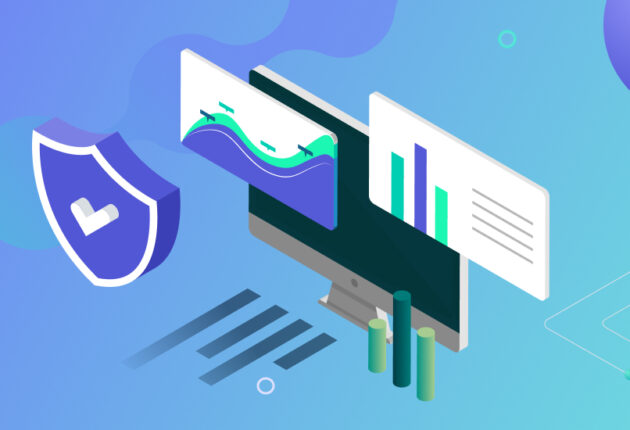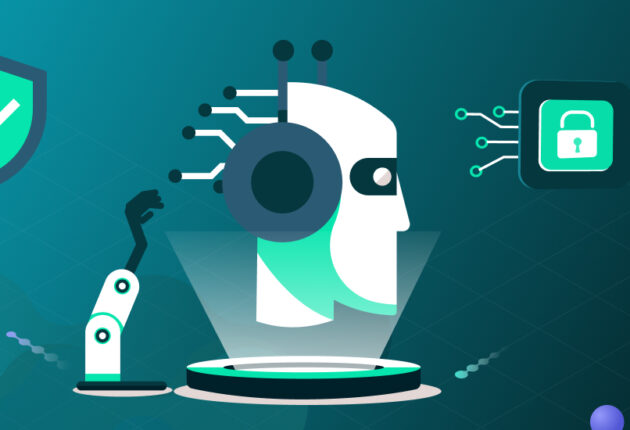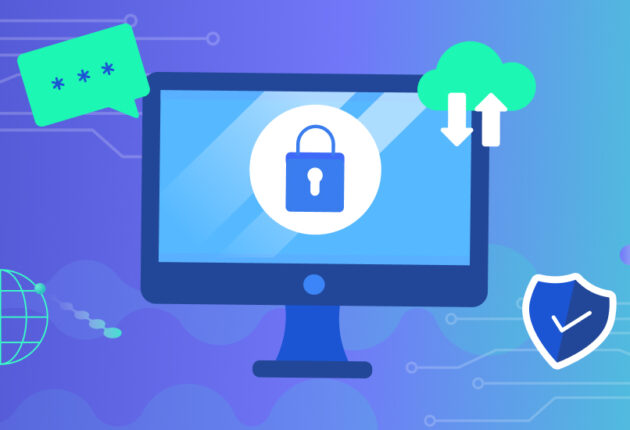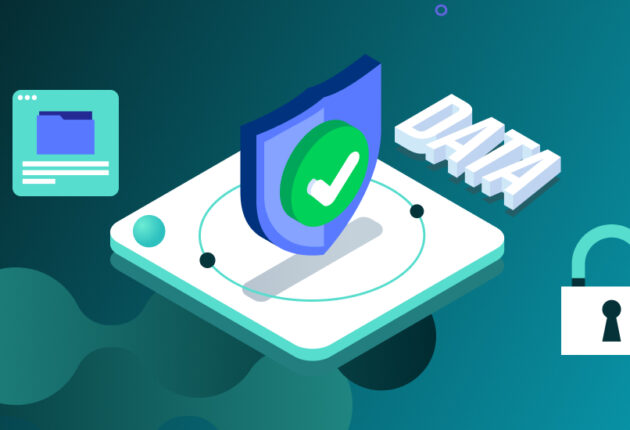As data volumes continue to grow exponentially, organizations are increasingly relying on enterprise data platforms (EDP) to manage, analyze, and derive value from their data assets. These platforms serve as the backbone of modern data ecosystems, enabling businesses to harness the power of their information for improved decision-making, operational efficiency, and competitive advantage. However, with the growing emphasis on data privacy and protection, EDP must balance performance with robust privacy measures. In this article, we’ll explore the essential features of an EDP with a special focus on how differential privacy can help platforms enhance data protection. Furthermore, we will discuss strategies for building an effective EDP ecosystem that prioritizes both performance and privacy.
In this article,
- The Enterprise Data Platform
- Differential Privacy:
- Building an Effective Enterprise Data Platform Strategy
- Future Trends
- Conclusions
The Enterprise Data Platform
According to Merkle: “An Enterprise Data Platform is a central data repository of an organization where all consumer, marketing, and intelligence data is unified. It serves as a foundation for operational and enhanced data functions, such as marketing, analytics, etc., across the enterprise.”1
Primary use cases for an enterprise data platform
Here are some examples of the primary use cases for an EDP that demonstrate how it can serve as a foundation for data-driven decision-making, operational efficiency, and innovation across various business functions:
- Customer analytics: EDP offers organizations a comprehensive understanding of customer interactions and behaviors across various touchpoints. By integrating data from multiple sources, such as websites, mobile apps, and in-store purchases, businesses can create a 360-degree view of each customer. This holistic perspective enables companies to analyze customer behavior patterns in depth, uncovering valuable insights that drive personalized marketing strategies and tailored customer experiences.2
- Financial analytics: EDP enables organizations to gain deep insights into their financial health and make informed strategic decisions. By consolidating financial data from various departments and sources, these platforms provide a unified view of the company’s financial landscape, facilitating comprehensive and accurate reporting. This centralized approach not only streamlines the reporting process but also enhances data consistency and reliability.3
- Supply chain optimization: EDP enables businesses to streamline their operations and enhance efficiency across the entire supply chain. By leveraging these platforms, companies can track inventory levels across multiple locations in real time, providing accurate and up-to-date information on stock availability. This real-time visibility helps prevent stockouts, reduce excess inventory, and optimize warehouse management.4
- Product development: EDP leverage data to drive innovation and enhance product offerings. One of the primary use cases is analyzing customer feedback and usage data to inform product improvements. By integrating data from various sources, such as customer reviews, support tickets, and usage metrics, companies can gain valuable insights into how their products are being used and where improvements are needed.5
- Advanced analytics and machine learning represent a cutting-edge use case for EDP, empowering organizations to extract deeper insights and drive innovation across their operations. These platforms provide a robust foundation for data science initiatives by providing access to high-quality, integrated data from various sources, ensuring that data scientists and analysts have a comprehensive and reliable dataset.6
Enterprise data platform architecture
At its core, an EDP architecture consists of 7 interconnected layers7:
- Data sources: internal and external data sources, including databases, applications, IoT devices, and third-party APIs.
- Data ingestion: tools and processes for collecting and importing data from various sources.
- Data storage: scalable storage solutions, such as data lakes and data warehouses.
- Data processing: engines for batch and real-time data processing.
- Data analytics: tools for advanced analytics, machine learning, and business intelligence.
- Data governance: Frameworks for ensuring data quality, security, and compliance.
- Data access: Interfaces and APIs for accessing and consuming data across the organization.
These seven steps would typically be implemented using a combination of on-premises infrastructure and cloud services, often in a hybrid cloud model. The specific technologies and tools used would vary depending on the organization’s needs, existing infrastructure, and preferences.8
It’s important to note that real-world architectures can be much more complex and tailored to specific business needs, regulatory requirements, and technological constraints.
Key features for optimized performance and privacy
To achieve optimal performance while ensuring data privacy, an EDP must incorporate several essential features. Let’s explore each of these in detail:
Data integration and storage
EDP must efficiently integrate data from diverse sources while preserving privacy. This includes support for multiple data formats and protocols, real-time and batch ingestion options, and privacy-preserving data integration techniques. As data volumes grow, the platform needs to scale horizontally and vertically, utilizing distributed storage architectures that support both structured and unstructured data. Essential features include elastic compute resources, automatic data partitioning, and efficient compression and indexing, all while maintaining robust privacy-preserving storage mechanisms.
Advanced analytics and machine learning
Modern enterprise data platforms go beyond basic reporting to provide advanced analytics capabilities while protecting sensitive data. They offer built-in machine learning algorithms with privacy considerations, support popular data science languages, and provide model training and deployment tools with privacy safeguards. These platforms also facilitate automated feature engineering and integration with external AI/ML platforms, all while implementing privacy-preserving machine learning techniques.
Data governance, quality, and security
Ensuring data quality and maintaining proper governance is critical for building trust and complying with privacy regulations. Key features include data lineage tracking, quality monitoring, master data management, and privacy impact assessments. Security and privacy controls are essential, encompassing fine-grained access controls, data encryption, anonymization and pseudonymization techniques, differential privacy implementation (as we will see below), and compliance with regulations like GDPR and CCPA.
Real-time processing and self-service analytics
The ability to process and analyze data in real-time is increasingly important but must be balanced with privacy considerations. This includes stream processing engines with privacy safeguards, complex event processing, and low-latency data pipelines with built-in privacy controls. Self-service analytics capabilities empower business users but must be implemented with privacy in mind, featuring intuitive data exploration tools, interactive dashboards, and natural language querying, all with appropriate privacy safeguards.
Differential Privacy
Differential is a practical tool that bolsters the privacy safeguards of an enterprise data platform while still facilitating meaningful data analysis. It has emerged as a powerful technique for enhancing data protection in enterprise data platforms. This mathematical framework allows organizations to share aggregate information about a dataset while withholding information about individuals within the dataset.
Differential privacy enhances data protection
Key benefits of implementing differential privacy in an EDP include:
- Stronger privacy guarantees: differential privacy provides a formal, quantifiable measure of privacy protection.
- Improved data utility: allows for useful data analysis while protecting individual privacy.
- Compliance with regulations: many privacy laws encourage or require the use of privacy-enhancing technologies like differential privacy.
- Enhanced trust: demonstrating the use of advanced privacy techniques can build trust with customers and stakeholders.
Implementing differential privacy in an enterprise data platform involves:
- Identifying sensitive data that requires protection.
- Determining the appropriate privacy budget (epsilon) for different use cases.
- Applying noise to query results or data releases.
- Monitoring and adjusting the privacy budget over time.
Data Peace Of Mind
PVML provides a secure foundation that allows you to push the boundaries.

Differential privacy enhances data security
Differential privacy can significantly enhance the security of an EDP in several key ways:9
- Protection against re-identification attacks: differential privacy adds carefully calibrated noise to data or query results, making it extremely difficult for attackers to identify specific individuals in the dataset, even if they have access to auxiliary information. This protects against re-identification and linkage attacks.
- Quantifiable privacy guarantees: differential privacy provides a mathematical framework for measuring and controlling the privacy loss associated with data analysis. This allows organizations to set precise privacy budgets and understand the privacy-utility tradeoff of their data operations.
- Preserving data utility: unlike more aggressive anonymization techniques, differential privacy allows useful insights to be extracted from data while still protecting individual privacy. This enables organizations to perform analytics and build models on sensitive data with strong privacy assurances.
- Resistance to database reconstruction attacks: differential privacy limits the amount of information that can be extracted about the underlying dataset through repeated queries. This protects against attacks that attempt to reconstruct the original database through clever querying.
- Future-proofing privacy protection: the guarantees provided by differential privacy hold regardless of an attacker’s background knowledge or computational power. This makes it robust against future advances in data mining or the release of additional datasets.
- Enabling safe data sharing: differential privacy allows organizations to share aggregate statistics and insights from sensitive data with external parties while maintaining strong privacy protections for individuals in the dataset.
- Compliance with privacy regulations: implementing differential privacy can help organizations meet regulatory requirements around data protection and privacy, such as GDPR and CCPA.
- Protecting against insider threats: by limiting the precision of query results, differential privacy helps mitigate the risk of data breaches or misuse by internal users with database access.
- Allowing for privacy-preserving machine learning: differential privacy techniques can be applied to machine learning algorithms, enabling models to be trained on sensitive data without memorizing individual records.
- Balancing data access: differential privacy provides a framework for controlling access to sensitive data, allowing organizations to implement fine-grained access controls based on privacy budgets.
By incorporating differential privacy into their data platform architecture, enterprises can significantly enhance their overall data security posture while still deriving value from their data assets. This approach allows for a more nuanced and mathematically rigorous approach to data protection compared to traditional access control and encryption methods alone.
Real-life examples of successfully implementing differential privacy
Major tech companies and government institutions have been at the forefront of implementing differential privacy at scale, demonstrating its practical applications in various settings:
- Google has integrated differential privacy into several products, including Chrome browser usage statistics, Google Maps traffic data, and Android device usage statistics. They’ve also open-sourced their differential privacy library, making it accessible for integration into EDP.10
- Apple has taken a similar approach, implementing differential privacy in iOS and macOS to collect user data while preserving privacy. This technology is used in features such as QuickType keyboard suggestions, Safari web browsing habits, and Health app usage statistics. While not an EDP per se, Apple’s implementation showcases how differential privacy can be applied to large-scale data collection and analysis in consumer-facing products.11
- Microsoft has been working on integrating differential privacy into its data platform offerings, collaborating with Harvard University on the OpenDP project. This initiative includes the SmartNoise Core Differential Privacy library and tools for releasing privacy-preserving queries and statistics, aiming to bridge the gap between academic knowledge and practical, real-world deployments in enterprise settings.12
- Uber, for instance, developed a SQL query analysis and rewriting framework called “sql-differential-privacy” (now deprecated) to enforce differential privacy for general-purpose SQL queries.13
- The U.S. Census Bureau has implemented differential privacy for the 2020 census data release, demonstrating its applicability to sensitive data in government settings.14
It’s important to note that many enterprises are still in the early stages of adopting differential privacy for their EDP. The technology is evolving, and companies are exploring ways to integrate it into their existing data platforms. These examples illustrate how differential privacy is being adopted across various sectors, from tech giants to government institutions, paving the way for more privacy-preserving data analysis in EDP.
As the field progresses, we can expect to see more concrete examples of EDPs successfully implementing differential privacy, balancing the need for data utility with strong privacy guarantees.
Building an Effective Enterprise Data Platform Strategy
Developing a comprehensive EDP strategy that prioritizes both performance and privacy is essential for long-term success. This strategy should be built on a foundation that aligns with overall business objectives while adhering to stringent privacy principles.
Data landscape
The first step in this process is to conduct a thorough assessment of the current data landscape. This involves understanding existing data sources, evaluating data quality, analyzing usage patterns, and identifying potential privacy risks. With this knowledge, organizations can then define a robust data governance framework that establishes clear policies, procedures, and roles for data management and privacy protection.
Technologies
Choosing the right technologies is crucial in implementing an effective EDP. Organizations should select tools and platforms that not only meet their current needs and scale requirements but also incorporate strong privacy safeguards. It’s equally important to plan for future scalability, designing the platform to accommodate growth in data volume and complexity while maintaining rigorous privacy controls.
Data protection
Data quality and privacy should be at the forefront of all data management processes. This means implementing stringent measures to ensure data accuracy, completeness, and consistency while simultaneously protecting user privacy. Fostering a privacy-aware data culture across the organization is also vital, as well as encouraging data literacy and privacy awareness among all employees. To protect sensitive information and respect user privacy, organizations must implement robust security and privacy measures. This includes developing a comprehensive strategy that covers all aspects of data protection, from encryption and access controls to data minimization and retention policies.
Indicators
Finally, establishing key performance indicators (KPIs) and metrics is essential for measuring the success of the EDP. These should encompass both performance and privacy criteria, allowing for continuous monitoring of platform effectiveness. Regular reviews and updates should be conducted to incorporate new technologies, best practices, and privacy enhancements, ensuring the platform remains at the cutting edge of both performance and privacy protection.
Future Trends
As technology continues to evolve, several trends are shaping the future of EDP and privacy:
- Edge computing integration is emerging as a key trend, allowing data to be processed closer to its source. This approach not only reduces latency but also enhances privacy by minimizing the movement of sensitive data across networks.15
- AI-driven automation is increasingly being applied to data management, quality assurance, analytics, and privacy protection tasks. This trend promises to improve efficiency and accuracy in handling large volumes of data while also strengthening privacy safeguards.
- Federated learning represents a significant shift in how machine learning is conducted. By enabling model training on decentralized data, it enhances privacy and reduces the need for data movement, addressing key concerns in data protection.16
- Quantum computing, while still in its early stages, holds promise for both complex data processing and advanced encryption methods. Organizations are beginning to explore quantum-resistant encryption to future-proof their data security.17
- Enhanced privacy techniques are being developed and refined. Methods such as homomorphic encryption, secure multi-party computation, and zero-knowledge proofs are advancing, offering new ways to protect data while still allowing for its analysis and use. Privacy-preserving synthetic data generation is another area of innovation. This technique allows for the creation of datasets that maintain the statistical properties of the original data while protecting individual privacy, opening new possibilities for data sharing and analysis.18
Organizations that stay ahead of these trends and adapt their EDP strategies accordingly will be better positioned to leverage data as a competitive advantage while maintaining robust privacy protections. By embracing these emerging technologies and approaches, companies can balance the need for data-driven insights with the imperative of protecting individual privacy, setting themselves up for success in an increasingly data-centric and privacy-conscious business environment.
Conclusions
EDP is more than just a technological solution – it’s a strategic asset that can drive innovation, improve operational efficiency, and enhance decision-making across the organization. By incorporating essential features such as robust data integration, advanced analytics, and strong security and privacy controls, businesses can build a solid foundation for their data-driven initiatives that respect individual privacy.
By leveraging cloud technologies, implementing effective data governance, and adopting advanced privacy-enhancing technologies like differential privacy, organizations can unlock the full potential of their data assets while maintaining the highest standards of data protection. Even though the journey towards building an optimized and privacy-preserving EDP may be complex, we believe that the key to success lies in viewing an EDP not as a static solution but as an evolving ecosystem that grows and adapts with the organization’s needs and the changing privacy landscape.
2 Mitratech, https://mitratech.com/en_gb/governance-risk-compliance/what-is-enterprise-data-management/
3 Oracle, https://www.oracle.com/uk/performance-management/enterprise-data-management/
4 See Note 2
5 See Note 2
6 See Note 2
7 Bizcon, “The role of enterprise architecture,“ 6 September 2023,Bizcon, https://www.linkedin.com/pulse/role-enterprise-architecture-data-privacy-protection-bizcon-aps
8 For example, a large financial institution might use Hadoop for their data lake, Snowflake for their data warehouse, Kafka for real-time data streaming, and Tableau for business intelligence, all orchestrated using Apache Airflow and secured with enterprise-grade encryption and access controls.
9 See Note 7
10 Google Cloud, https://cloud.google.com/bigquery/docs/differential-privacy
11 Apple, “Apple Diff Privacy Technical Overview,” images.apple.com/privacy/docs/Differential_Privacy_Overview.pdf
12 Neptune AI, https://neptune.ai/blog/using-differential-privacy-to-build-secure-models-tools-methods-best-practices
13 See Note 12
14 Peter Wayner, “Differential Privacy Pros and Cons,” 4 Jan 2021, CSO, www.csoonline.com/article/570203/differential-privacy-pros-and-cons-of-enterprise-use-cases.html
15 Faysal Ghauri, “The rise of Edge Computing,” 16 June 2024, Linkedin, https://www.linkedin.com/pulse/rise-edge-computing-transforming-data-processing-analytics-ghauri-ve7if/
16 Clyfar Tech, “Applying Federated Learning,” 18 February 2024, Linkedin, https://www.linkedin.com/pulse/applying-federated-learning-preserve-data-privacy-ai-the-bit-mind-ind9f/
17 Kaledio Potter et Al, “Quantum Computing,” January 2024, Research Gate, https://www.researchgate.net/publication/377663224_Quantum_Computing_and_its_Potential_Applications
18 Bristena Oprisanu, “Differential Privacy,” 20 December 2023, Bitfount, https://www.bitfount.com/post/differential-privacy-pets-privacy-enhancing-technologies

